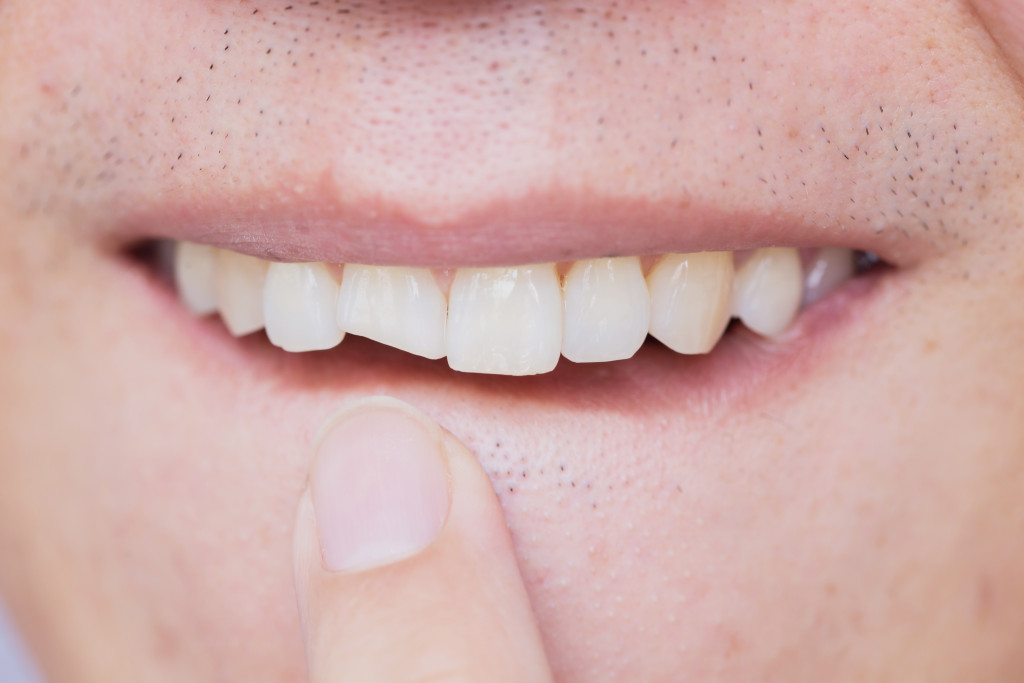- Visit a dentist to determine the best course of treatment for cracked teeth, such as bonding or root canal therapy.
- Practice good oral hygiene to protect the cracked tooth from further damage and maintain restorative oral health.
- Avoid hard candy or ice cubes, as these can cause the crack in the tooth to worsen.
- Visit your dentist at least twice yearly for checkups and cleaning to identify and catch issues early.
Cracked teeth can be a painful and daunting experience. Not only do they cause discomfort when eating or drinking, but they can also lead to more serious dental issues if left untreated. Fortunately, several treatments for cracked teeth can help restore them to their original condition. This article will discuss the different types of treatment for cracked teeth, as well as how to prevent further damage from occurring in the future.
Visit a dentist and determine a course of treatment.
Here are the various dental treatments that you can consider with your dentist if you have cracked teeth:
Undergo bonding or tooth-colored filling.
Tooth bonding or tooth-colored fillings are a great way to repair small, non-sensitive cracks. These restorations use composite resin shaded to match the tooth’s natural color to rebuild the structure and cover surface discolorations. The resin is shaped and sculpted according to the desired look of the patient’s tooth, then hardened with ultra-violet light.
A significant advantage of these treatments is that they preserve much more natural tissue and require less preparation than other treatment options. They are also highly resistant and can last several years with proper oral care. Undergoing bonding or tooth-colored filling is essential in preserving the strength and health of teeth following a small crack, allowing patients to keep their smile looking fantastic!
Apply dental crowns, veneers, or inlays.

When dealing with cracked teeth, it is essential to understand the need for more advanced treatments than a standard filling. Dental crowns, veneers, or inlays may be needed if a crack is more extensive than a filling can repair. Getting dental veneers is especially effective for treating damaged front teeth that are visible when smiling.
Custom-made shells of tooth-colored materials are bonded to the tooth’s front surface and can improve your tooth’s size, shape, and color. This can protect the underlying structure of your damaged tooth from further harm and give you an aesthetically pleasing smile that looks more natural than fillings or crowns.
Look into root canal therapy.
Root canal therapy is a dental procedure used to save teeth that are severely damaged. The process is vital for individuals with deep cavities or an infection inside the tooth’s pulp chamber, particularly if the tooth has been cracked. It involves removing the infected tissue from the root canals and sealing openings to prevent bacteria from entering.
This can be an intimidating process, so it is essential to properly investigate root canal therapy to ensure that all factors are considered. The risks and benefits of root canal therapy should be carefully weighed before deciding on a course of action.
Consulting with a professional specializing in this technique is also advised, as they will be best equipped to provide information and guidance on treating the problem effectively and safely.
Consider getting a dental implant.
For those dealing with severely damaged or cracked teeth, a dental implant can be the most suitable route for replacement. A dental implant is a titanium post that fuses to the jawbone and mimics a natural tooth root, making it stable enough for tooth restoration.
Having a dental implant fixed in place of a severely cracked tooth protects healthy existing teeth whose functions have been compromised or replaced, like chewing or working as support for other teeth.
This also increases oral health by preventing problems related to missing teeth, such as speech problems and crooked, lost, and misaligned teeth from occurring. Doing this allows one to smile once again with renewed confidence!
Visit the dentist at least twice a year.

Visiting the dentist for checkups and cleanings is important to maintaining healthy teeth. These regular maintenance visits help to identify and catch issues early, including cracks in teeth. Cracks, also known as dental fractures, can happen from various causes such as eating hard food, grinding the teeth during sleep, or trauma.
By attending regular dental appointments with your dentist, they can start treating any existing problems before they become larger issues, saving time and money in the long run. In addition to visual exams, most checkups include x-rays that allow dentists to look more closely at potential tooth distress and take appropriate action.
Practice good oral hygiene
Good oral hygiene is important when attempting to protect cracked teeth from further damage. To do this, brushing twice daily, flossing regularly, using mouthwash, and limiting sugary foods and drinks are key.
Hard candy or ice cubes should be avoided entirely because intense temperatures or aggressive gum-rubbing can cause the crack in the tooth to worsen. Small cracks may lead to root changes and dental emergencies associated with pain and inflammation without proper and adequate oral hygiene.
Taking preventive steps such as brushing after meals, using a soft-bristled brush, limiting acidic beverages like coffee or citrus fruits, and regular professional dental cleanings are essential for one’s overall health. Maintaining healthy teeth also ensures a beautiful smile that will last a lifetime.
These are the essential treatments, preventive measures, and lifestyle habits to consider when looking after a cracked tooth. Whether you go for a dental implant or simply maintain a good oral hygiene routine, the most important thing is to visit your dentist.

